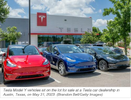- Joined
- 8 June 2008
- Posts
- 14,045
- Reactions
- 21,130
Three Maintenance Philosophies Fought for Control of the Auto Industry - Third Draft | Books in Progress
Books in Progress is what we call a “public drafting tool”: Drafts will be made available for comment from the public, allowing for direct collaboration between author and reader.



